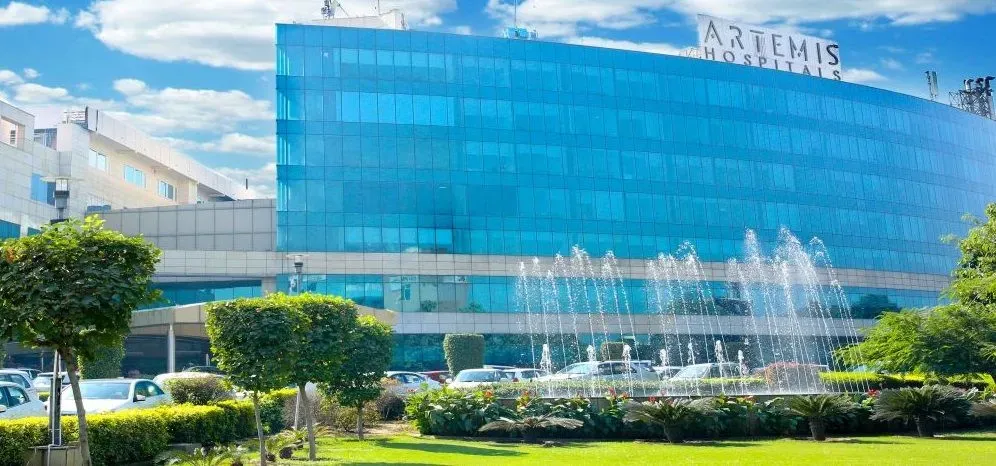Overview of Minimally Invasive Spine Surgery Treatment India
Spinal diseases such as disc herniation, instability, abnormal bone formation, spinal tumors and curve deformities sometimes required the surgery of spine. The minimal invasive surgery is used to correct these deformities and helps in relieving pain or providing stability. Minimally invasive spine surgery involves small incision which is different from the traditional large incision surgery. Due to this reason it is more safe and needs less time for the complete recovery. But it may not be the option for every individual as the selection is based on the presentation of the spinal deformities. Minimal invasive surgery also reduced the risk of infection and post-operative pain. The muscle and tissue damage is also minimal. However, the minimal spine surgery has less risk but it still may cause the infection despite the fact that the incision is small. It also has the risk factor of damage to the cord which can lead to paralysis. Sometimes the minimal invasive surgery fails which requires a second spinal surgery or open spinal surgery. The success rate of minimally invasive spinal surgery is good but it is not more than open spine surgery so it is not suitable for every individual who is undergoing the spinal surgery.
Types of Minimally Invasive Spine Surgery Treatment India
There are several types of minimally invasive spine surgery (MISS) procedures that can be performed depending on the specific spinal condition. Here are some common types:
- Microdiscectomy
- Minimally Invasive Transforaminal Lumbar Interbody Fusion
- Minimally Invasive Posterior Lumbar Interbody Fusion
- Minimally Invasive Anterior Lumbar Interbody Fusion
- Vertebroplasty and Kyphoplasty
- Percutaneous Pedicle Screw Fixation
- Laminectomy
Microdiscectomy
This procedure is used when there is a condition of a herniated disc. A small incision is made and by help of endoscope the surgeon removes the portion of the disc that is compressing the nerve root or the spinal cord in the adjacent area.
Minimally Invasive Transforaminal Lumbar Interbody Fusion (TLIF)
TLIF is a surgery which is performed to treat conditions such as degenerative disc disease and spinal instability. Small incisions are made, and with the help of special kinds of instruments and techniques, the surgeon removes the damaged disc, implants a bone graft in disc space and fuses them. It provides stability to the vertebrae.
Minimally Invasive Posterior Lumbar Interbody Fusion (PLIF)
Similar to TLIF, PLIF is a fusion surgery which is also performed through small incisions in the back. It involves removing the damaged disc and implanting a bone graft into the disc space to allow fusion.
Minimally Invasive Anterior Lumbar Interbody Fusion (ALIF)
ALIF is a fusion surgery performed through small incisions in the abdomen. The damaged disc is removed, and a bone graft is inserted into the disc space from the front of the spine.
Vertebroplasty and Kyphoplasty
These two procedures are used to treat compression fractures of the spine that are either caused by osteoporosis or trauma. A special kind of needle is inserted into the fractured area. In vertebroplasty, a cement-like material is injected to provide stability to the bone. In kyphoplasty, a balloon is first inserted and then it is inflated to restore vertebral height before the cement is injected.
Percutaneous Pedicle Screw Fixation
This procedure is used to stabilize the spine in conditions such as spinal fractures or spinal deformities. Small incisions are made, and screws are inserted through the skin and into the vertebrae. Rods are also used to place the screws in place to provide greater stability.
Laminectomy
In this procedure, a small portion of the bone of a vertebra is removed which relieves pressure on the spinal cord and the surrounding nerves. Minimally invasive technique is used and by the use of special tools surgeon access to it and remove the lamina.
Procedure of Minimally Invasive Spine Surgery
Patient Evaluation: by examining the patient with tests and medical history, the spinal condition of the patient is determined and a suitable procedure of minimally invasive surgery is chosen.
Anesthesia: anesthesia is given to the patient to eliminate the effect of pain or irritation during the procedure.
Incision: Small incisions which are less than an inch long, are made near the affected area of the spine. The surgeon may use real-time X-ray guidance to confirm the accurate placement of instruments.
Dilating or Tissue-Splitting Technique: Instead of cutting the muscles and tissues, minimally invasive spine surgery uses the techniques of dilation or tissue splitting. Tubes are inserted through the incisions, which stretch the muscles and tissues to create a way to the spine.
Visualization and Instrumentation: An endoscope is inserted through the pathway to access the spinal structures. These tools provide vision of the surgical site. Special types of surgical instruments, such as tiny cameras, microscopes, or surgical lasers, may be used to perform the particular procedures.
Type of Treatment: The type of technique which is specific for each individual is performed. The minimally invasive spine surgeries include discectomy, laminectomy, spinal fusion, or placement of spinal implants are performed.
Closure: after the surgical instruments are removed, the incisions are closed using sutures.
Postoperative Care: there is no need of proper care as in open spinal surgery as it is safe but pain medications, prevention of infection and physical therapy is essential part of care.
Diagnosis of Minimally Invasive Spine Surgery Treatment India
Cost of Minimally Invasive Spine Surgery in India
Minimally Invasive Spine Surgery cost in India is between USD 4860 to USD 5940. The overall cost of a medical procedure can vary based on several factors, including the patient's condition, the type of hospital selected and the severity of the disease.
Cost of minimally invasive spine procedures in India:
| Treatment Cost in India |
Min Cost in Dollar |
Max Cost in Dollar |
| Minimally Invasive Spine Surgery |
$ 2877.12 |
$ 3835.36 |
| Anterior Cervical Discectomy and Fusion (ACDF) |
$ 2131.20 |
$ 2841.60 |
| Anterior Cervical Corpectomy Spine Surgery |
$ 4795.20 |
$ 6393.6 |
| Others |
$ 4700 |
$ 7490 |
Symptoms and Risk factors
Here are some Risk Factors
Infection
Although the risk of infection is generally lower in minimally invasive procedures, it still exists. The use of medications for infection prevention helps minimize this risk.
Bleeding
Although it is a minimal invasive surgery, there is still a risk of bleeding during and after the procedure. In some cases, bleeding may occur after closure and the blood transfusion is required.
Nerve or Spinal Cord Damage
There is a risk of injury to nerves in the surrounding or the spinal cord during the procedure. This can lead to weakness, numbness, or even paralysis of the lower legs.
Allergic Reactions
Some individuals may have allergic reactions to materials used in the artificial disc or surgical implants.
Failure to find Problem
In some cases, minimally invasive spine surgery procedures may not fully find the underlying spinal condition or may require open spinal surgery in the future.
Blood Clots
Prolonged immobility during and after surgery can increase the risk of blood clots in the legs or lungs. Early mobility, and blood-thinning medications are used to prevent the blood clot formation
Rare Complications
Although rare, there are additional complications associated with specific procedures, such as hardware failure (in the case of spinal fusion with implants), allergic reactions to surgical materials, or leakage of fluid in the surroundings of the brain.
Top Hospitals for Minimally Invasive Spine Surgery in India
Shaping the future of the healthcare institution and establishing the path to accomplishment.
Kokilaben Dhirubhai Ambani Hospital and Medical Research Institute Mumbai,India
Book Appointment
Top Doctors for Minimally Invasive Spine Surgery in India
Empower your Health with the Expertise of Leading Medical Professionals.
Dr. Hitesh Garg Spine Surgeon
Department of Spine Disorder
Senior Consultant
Book Appointment
Dr. Saurabh Misra
Department of Gastro & Minimal Access Surgery
Consultant
Book Appointment
Treatment Costs for Minimally Invasive Spine Surgery
Be the change and be an opportunist in transforming healthcare.
How it's Works
Guiding your Journey from Discovery to Treatment Planning and Beyond.
Discovery
Get a consultation to discover about your treatment
Pre-Treatment
Admission to the best hospital and all pre-treatment facilities
Post Treatment
Get post-treatment follow-up care with medicine fulfillment
Treatment Planning
Hassle-free treatment planning with package & cost estimations
in-treatment
world-class quality procedures and equipment for treatment


























